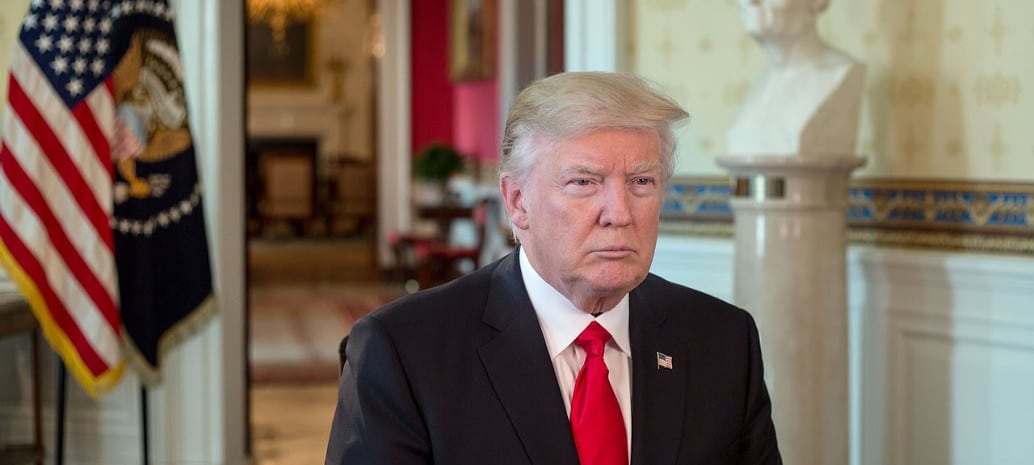The Trump Administration has been just as eager about pursuing a sort of pugnacious economic nationalism as it has been in propping up coal. However, unlike the administration’s failed attempt to turn the nation back to greater dependence on 19th century sources of fuel, its actions on trade are already having concrete impacts.
While the U.S. solar industry appears to be largely adapting to if not exactly thriving under the new reality of the Section 201 tariffs, this is not the only trade action it must reconcile with. At the Solar Power Finance and Investment Conference in San Diego many of the conversations mentioned both existing tariffs on steel and aluminum and the potential for new duties under the Section 301 process.
Steel and aluminum
This new threat comes as IHS Markit has released a new analysis of the impacts on the solar industry from the recently imposed tariffs on steel and aluminum, finding a 1 – 1 /12 cent per watt increase in the price of fixed-tilt systems and a 1 1/2 – 2 1/2 cent increase for trackers. This is slightly lower than an earlier analysis by Roth Capital.
The details of these tariffs are an important consideration. At the conference the chair of a major tracker maker told pv magazine that the impact from the tariffs is less severe than expected, given that they mostly applied to raw steel and aluminum products, not the finished products that his company imports. However, the president of a major construction contractor told us that the restricted supply of scrap steel as the raw material for foundations is causing U.S. suppliers to raise their prices.
However, it is also clear that increased prices for steel and aluminum don’t only affect the solar racking, tracking and mounting systems industry, but also other forms of power that are in competition with solar.
For instance, steel is a major input in the cost of building new gas plants. And while gas as a generation source is more a matter of fuel cost than construction cost, steel tariffs are still going to make new gas plants more expensive. These additional costs come as gas is already under pressure due to flat-to-declining electricity demand and increasing renewable energy adoption in states like California and Texas.
Section 301
However, this morning most of the concern that pv magazine staff heard voiced at the Solar Finance and Investment conference had to do not with steel and aluminum, but with the potential for new tariffs on Chinese products under Section 301 of the Trade Act of 1974.
Section 301 is the latest obscure trade law to be utilized by the Trump Administration, which gives the U.S. government the ability to retaliate when it finds that a foreign government is not following international trade rules, including refusal to open its markets to U.S. goods and services.
President Trump ordered trade authorities to prepare 25% ad valorem tariffs on Chinese products this morning, under a Section 301 investigation initiated last August. As part of this investigation last October SolarWorld Americas CEO Jürgen Stein testified before the U.S. Trade Representative, arguing that the theft of the intellectual property associated with passivated emitter rear contact (PERC) technology from its computer network has enabled Chinese PV makers to more rapidly adopt PERC.
As evidence, SolarWorld cites a 2014 Grand Jury indictment of five agents of the People’s Liberation Army for acts of economic espionage including breaking into SolarWorld’s computers.
However, no one knows what products Section 301 tariffs will be applied to, and the concerns of many are not that the tariffs will be applied to Chinese solar cells and modules, but that instead they will be applied to other products including inverters. The Trump Administration plans to select products from a proposed list which the U.S. Trade Representative has not yet published.
These in turn will only be applied after a consultation period, and the United States is currently in the middle of negotiations with China, which are required under the Section 301 process.
Push-back at the WTO
President Trump’s Section 201 tariffs and his other trade actions are already the recipient of multiple challenges at the WTO. According to Reuters, a WTO panel also ruled yesterday that the United States did not correctly assess prices in setting 2012 import anti-dumping and anti-subsidy duties on products including solar cells.
Ultimately, many both in the solar industry and outside it have expressed concerns that Trump’s actions on trade will lead to retaliation. A potent example of this is the retaliatory tariffs that China slapped on U.S. polysilicon, which have largely shut off the nation’s market to companies with U.S. production including REC Silicon and Hemlock Semiconductor.
Either way, many will be watching over the next few days for the release of the list of up to 1,300 products under Section 301, and for Trump’s next move on trade.
This content is protected by copyright and may not be reused. If you want to cooperate with us and would like to reuse some of our content, please contact: editors@pv-magazine.com.









By submitting this form you agree to pv magazine using your data for the purposes of publishing your comment.
Your personal data will only be disclosed or otherwise transmitted to third parties for the purposes of spam filtering or if this is necessary for technical maintenance of the website. Any other transfer to third parties will not take place unless this is justified on the basis of applicable data protection regulations or if pv magazine is legally obliged to do so.
You may revoke this consent at any time with effect for the future, in which case your personal data will be deleted immediately. Otherwise, your data will be deleted if pv magazine has processed your request or the purpose of data storage is fulfilled.
Further information on data privacy can be found in our Data Protection Policy.